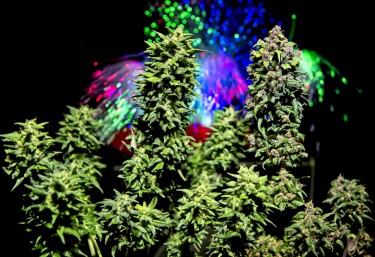
Flipping Weed Plants – When to transition from veg to flowering
Growing marijuana requires a lot of understanding to ensure the desired result is achieved. Those with proper knowledge of cultivation technique know that taking the wrong step can spoil the process. Because of this, it’s important to use the right information and do the right thing in the right order. The transition of marijuana from the veg phase to the flowering phase requires proper timing. With the right timing, you will achieve maximum yield and fewer complications. Read on as we explore the things to do if you want to flip your marijuana from the veg to the flowering stage.
Switching from veg to flowering too soon can result in poor yields. Likewise, turning your marijuana too late can also result in the production of burnt buds or overgrowth. There are several factors that need to be properly considered when attempting to flip marijuana. These factors include the age of the plant, the maximum height that can be reached in your setup, the type of cannabis strain, the source of the plant, and the cultivation method used.
It’s important to understand the role that each of these factors play when it comes to achieving the bottom line when turning. It is also important that each grower consider the uniqueness of each grow when considering these factors as well. The reason for this is that it helps to understand the peculiarities of different plants and why copying may not give the desired results. We will look at these factors one by one to explain what to do and when.
age of the plant
The age of the plant is a factor that many growers tend to give less credit to, even though they shouldn’t. Some have even gone so far as to say that the age of the plant doesn’t matter at all. It’s commonly believed that plants grown from seed take 60 days to mature, but that’s not set in stone. Young seedlings can only flower properly after about two to three weeks, so the age of the plant must be taken into account. Optimally, plants should be in their veg stage for around 60 days for maximum yield. This allows the plant to grow sufficiently and fewer mistakes are made. However, if growing conditions don’t support this 60-day benchmark, flowering can occur earlier.
Maximum plant height
The space available in your grow setup is the most important factor to consider. This is because this factor is breeder dependent and every breeder should make decisions based on this. Plants that stay in the veg phase longer tend to grow taller. For this reason, it is important that you turn the plants over at an early stage if the installation area is small. This is to ensure that the plants do not outgrow the area before flowering. Plants that grow too tall in such situations will take a lot of damage and may end up being burned or fried.
The ideal height of the plant during the veg stage is 30cm from the lights above them. This height is fairly easy for growers to estimate, depending on their facility. However, it is important to consider the lighting fixtures used along with this height. Some LED lights will get brighter than others and this will affect the distance from the maximum height of the plant.
type of load
Indica and sativa cannabis strains have different characteristics that need to be considered when turning your cannabis. The differences are not as pronounced during the veg phase as during the flowering phase. Indica cannabis strains are more adept at giving short, thick, and bushy plants. Whereas sativa strains are taller, thinner, and grow more vigorously during their flowering phase. Sativa strains can grow to double their height during the flowering phase through to harvest time.
Hybrid cannabis strains result in a mix of both parental traits and therefore cannot be easily classified as indica or sativa. When dealing with hybrid cannabis strains, it’s important to research the strain’s parents to know the best way to grow them. The rule of thumb that hybrids double in size in the vegetative state is used when dealing with hybrid strains.
source of the plant
The origin of the cannabis plant is important when determining the timing of the transition from the vegetative to the flowering phase. A solid root system is important to avoid problems during the flowering phase, which is why the origin of the plant is important. Clones tend to grow very large and can force the breeder to turn early due to size. However, growers must ensure that these clones have an adequate root system before flipping. Seedlings, on the other hand, can be turned earlier, but still need a period of 2 to 3 weeks before this happens.
cultivation methods
The cultivation method used can affect the timing of the switch from veg to bloom. Flowering time varies depending on the method used. Sea of Green (SOG) methods ensure flipping occurs early as it is mostly used on indica strains. Plants grown under SOG can flower when the height is between 15 and 30 cm. The Screen of Green (ScrOG) method involves using a screen 30 to 60 cm above the base of the plants. This method requires plants to remain in the vegetative state for several weeks before flowering. The lollipopping technique removes the lower growths of the plant to ensure available nutrients get to those who need them. Flowering can occur at 30-45cm for sativas, while indicas are around 100cm.
The available factors and considerations show that the decision of when to flip the plant needs to be made carefully. Each of these factors and their effects must be adequately understood before the grower begins turning the cannabis plant.
MORE ABOUT SWITCHING FROM VEG TO FLOWER, READ THIS..

GROW WEED FOR $50, YES WE HAVE FLOWER TODAY!

Post a comment: